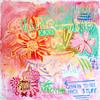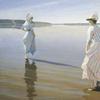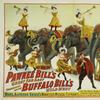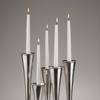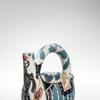Fabergé and the Russian Craft Tradition, An Empire's Legacy
- BALTIMORE, Maryland
- /
- November 02, 2017
Fabergé eggs, some of the most exquisite and innovative objects ever created, continue to fascinate with their beauty and complexity. These royal treasures were designed by Peter Carl Fabergé, jeweler and goldsmith to the Russian imperial court, and made by his team of skilled craftsmen.
Fabergé and the Russian Craft Tradition, An Empire's Legacy, is on view at the Walters Art Museum in Baltimore, from Nov. 12, 2017, to June 24, 2018.
This dazzling exhibition features 70 works including the Walters’ two famed Fabergé Easter eggs, alongside a stunning array of gold and silver vessels, intricate enamels, luxurious jewelry, carved stones, and icons that illuminate the beauty, technical sophistication, and artistry of Russian crafts.
During the three centuries of Russia’s Romanov dynasty, patronage of the arts flourished. This exhibition invites visitors to consider the broader historical context from which the House of Fabergé emerged, while marveling at some of the most opulent works in the Walters Art Museum’s collection, the Gatchina Palace Egg and the Rose Trellis Egg.
In 1885, the House of Fabergé created the first of fifty increasingly intricate jeweled and enameled Easter eggs. While the eggs may be among its most famous art objects, the output of Peter Carl Fabergé’s workshop was as diverse as it was ambitious. Fabergé united the technical and artistic skills of experts in enameling, gem-cutting, and metal-smithing, and drew inspiration from the cultures of Japan, China, and France. The workshop often followed the latest fashions, incorporating colorful, avant-garde elements into many objects; it also looked back in time, reviving historic Russian designs in traditional materials. This variety enabled Fabergé to build a wider audience, apart from the Russian elite, and made its products accessible to middle-class shoppers as well.
The House of Fabergé has come to symbolize Russia’s exceptional artistic output under the patronage of the Romanovs. Today, one hundred years after the abrupt and violent end of the Romanov dynasty during the revolutions of 1917, the Fabergé name remains legendary.
After Fabergé is an exhibition that runs concurrently with Fabergé and the Russian Crafts Tradition at the Walters. See 5 large-scale digital prints by artist Jonathan Monaghan. A digital animator by training, Monaghan creates finely crafted, virtual versions of the famous Fabergé Imperial Easter eggs.
Curators
Jo Briggs, Associate Curator of 18th- and 19th-Century Art, The Walters Art Museum is the In-house Curator of the exhibition. Margaret Trombly is the exhibition co-curator and editor of the publication Fabergé and the Russian Crafts Tradition: An Empire’s Legacy.
A lavishly illustrated book edited by Margaret Trombly tells the story of the extraordinary works that emerged from the Russian decorative arts tradition. Co-published with Thames & Hudson, the book is available in the Walters Art Museum Store and online ($39.95, hardcover with slipcase) beginning in mid-October.”







